Posts Tagged: Cotton
A Big Cheer for a Crab Spider
What happened in our pollinator garden on June 3 probably would have promoted a standing ovation...
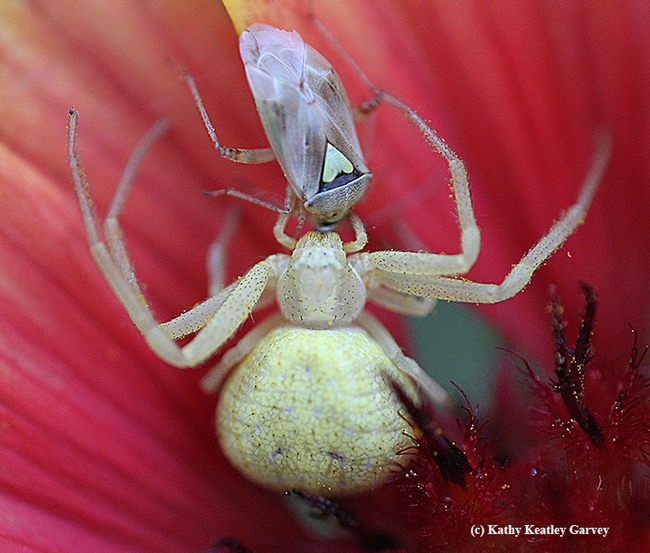
A crab spider nails an agricultural pest, a lygus bug. (Photo by Kathy Keatley Garvey)
Geospatial pioneer at Kearney Kris Lynn-Patterson retired in June
When the University of California decided to provide geospatial support to its scientists at the UC Kearney Agricultural Research and Extension Center in 2000, they tapped Kris Lynn-Patterson, an experienced teacher and information systems technologist, to lay the groundwork. Geographic information systems academic coordinator Lynn-Patterson retired in June.
Lynn-Patterson earned bachelor’s and master’s degrees in geography/climatology at Fresno State University and taught weather, climate landforms and global information systems classes there as a full-time lecturer for five years and part-time at State Center Community College for 10 years.
In 1990, while still teaching part time, she took a new position as a climatologist with a crop insurance firm.
“We were embarking on a brand-new initiative in the crop insurance business using remote sensing and spatial imagery to appraise losses from weather events,” Lynn-Patterson said.
In 2000, she again broke ground by introducing geospatial technologies to agricultural research at Kearney. Geospatial technologies now allow scientists to take a broader view of landscapes than is possible from the field level.
For example, Lynn-Patterson worked with Pete Goodell, UC Cooperative Extension advisor with the Statewide Integrated Pest Management Program, to understand the migration of lygus bugs through the San Joaquin Valley’s mosaic of diverse crops. In the spring, lygus can reproduce in lush vegetation on foothills surrounding the San Joaquin Valley. As the plants dry when the weather warms and rain stops, the lygus begin looking for a new home in valley agriculture, including cotton, which suffers severe economic losses from lygus.
By combining observations made on the ground with GIS mapping technology, Goodell was able to determine the areas in the San Joaquin Valley where cotton is most likely to have lygus problems in mid-summer. Where alfalfa is scarce, cotton fields absorb the migrating bugs. But where alfalfa is close to cotton fields, the alfalfa acts as a lygus sponge and spares cotton most of the damage.
Recently, Lynn-Patterson and her staff, in collaboration with the Citrus Pest and Disease Prevention Program, have been engaged in mapping cropping patterns in the Central Valley citrus belt. This geographic database will provide information needed to ensure quick action when Asian citrus psyllids or huanglongbing disease is found.
Last year, the Kearney GIS program became part of a larger UC Agriculture and Natural Resources statewide program called Informatics and Geographic Information Systems. IGIS is organizing and preparing data pertaining to agriculture and natural ecosystems statewide and making the information accessible on the web.
Lynn-Patterson has a full retirement planned. She is establishing a non-profit animal rescue organization, “Four Feet Inn,” that will connect homeless dogs, horses and other animals with foster families.
“My goal is to find a path to get animals off the street and into no-kill shelters,” Lynn-Patterson said. “I love animals and I love people who want to help animals, so facilitating this connection is what my spirit wants to do.”
Lynn-Patterson is also pursuing a writing career. She has already completed the first novel in a trilogy and begun work on the second. Both of these hobbies she plans to combine via the Internet with travels around the United States and Canada in a motor home.

Kris Lynn-Patterson
Lygus could add to cotton challenges in 2011
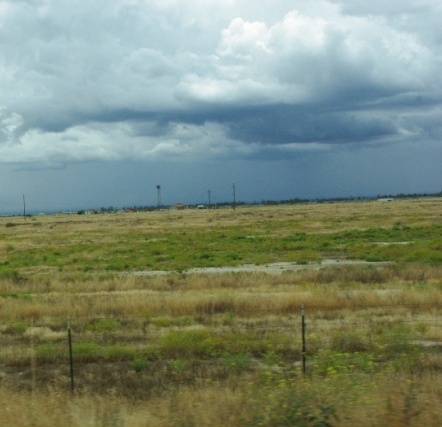
The large amount of rainfall this winter and spring will set the stage for more Lygus in summer. The relationship between historic rainfall records and annual cotton loss estimates supports the idea that Lygus will be more problematic this year and observations from the ground confirms this assessment. However, as in other years, the primary source of Lygus will be from crops and locations within a few miles of your cotton field, not miles away from the edge of the Valley.
In the past month, I have been conducting the annual Lygus survey. The survey was later than usual because of the extended rainy season into April and cooler temperatures in May. This is what I have observed:
- Foothills are generally dry and limited Lygus hosts, due primarily to early rains that favored grasses over broadleaves. 2011 was not a great year for wildflowers in the Sierra foothills due mostly because of the heavy grass prevented the annual broadleaves from developing widely.
- Along the I-5 corridor, tarweed, a key indicator host for Lygus, is located mostly south of Highway 198. It is more common on the valley flats than on the coastal foothills. When sampled 2 weeks ago, the population was split between overwintering adults and first generation nymphs, 1st to 3rd instars. The further south I travelled the more tarweed I could find in uncultivated areas of Kern County, commonly known as “deserts”. The importance of tarweed is not as much it is a major source for the Valley but rather as local infestation point and indicator of potential problems.
- Tarweed is a good plant for Lygus development because it spans the late winter and summer periods. It acts as a bridge for Lygus to develop a foothold and increase its numbers during May and parts of June. Without that bridge, populations tend to disperse and build slower and later.
Safflower plays a major role as a plant host bridge, allowing overwinter populations to settle and reproduce. Safflower plantings are spread throughout the Valley and will act as localized sources for Lygus into susceptible crops. The problem can be alleviated by managing Lygus population in safflower before the nymphs can become adults and leave the field. For details on managing Lygus in safflower to mitigate movement into cotton, refer to IPM in Cotton in the Western Region of the US, UC ANR Publication 3305.
If You Cotton to Honey...
If you cotton to honey, you'll want to head over to Briggs Hall tomorrow (Saturday, April 17)...
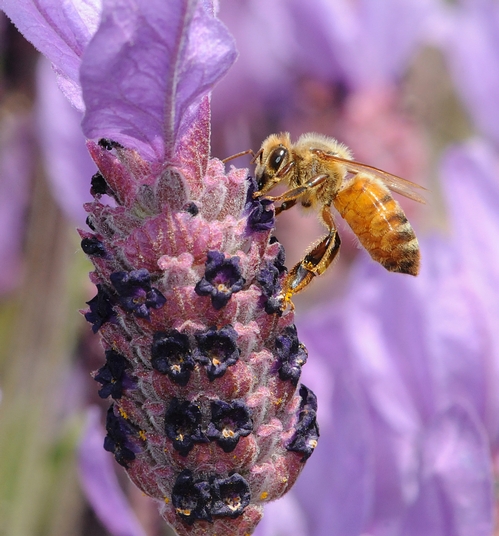
Honey Bee on Lavender
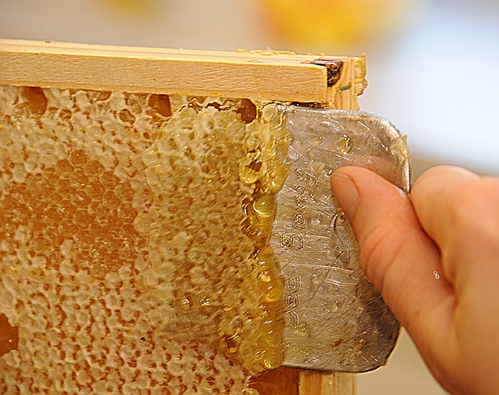
Honey Extraction
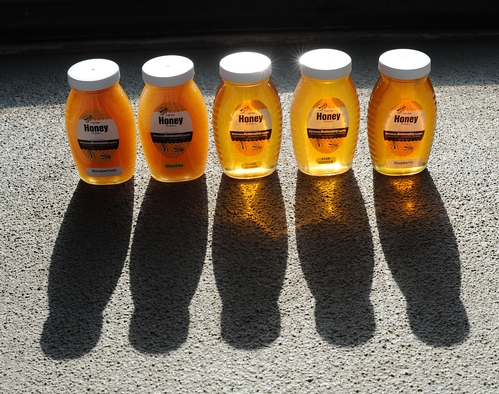
End Product